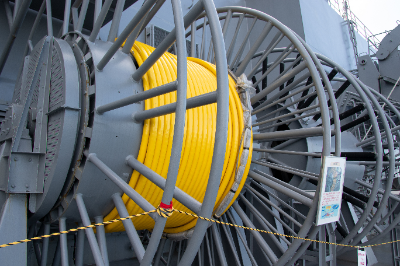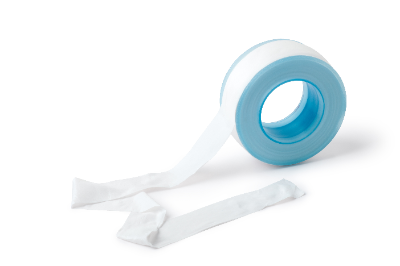What Is a Winder?
 A winder is a device that winds up long-shaped materials such as vinyl, tubing, or hose.
A winder is a device that winds up long-shaped materials such as vinyl, tubing, or hose.
A specific example is the take-up portion of a hose reel sold at home improvement stores. By winding long materials onto a core-like structure, the quality of the materials is not compromised and they can be handled in a compact manner.
Uses of Winders
Taking a familiar watering hose as an example it takes time and effort to retrieve and put away a long hose after it has been extended and used for sprinkling water, for example. Moreover, if the hose is not collected neatly, it will become entangled, making it difficult to start watering smoothly the next time it is used.
By using a reel, which has a handle attached to the core material, the hose can be smoothly reeled in and stored in a compact condition when cleaning up. Also, there is no need to worry about the hose getting entangled during the next operation.
Characteristics of Winders
Advantages
Long materials can be smoothly wound up in a short time. Especially when the material is heavy and long, it takes time and labor just to retrieve it. The use of a winder makes it easier to clean up after the work is finished.
Disadvantages
With manual winders, the material must be wound on average across the width of the reel, or it will be unevenly wound on one side, making it difficult to wind or stretch the material.
If the reel system is small, depending on the length of the material, winding habits may develop, making it difficult to use. If the reel is large and the material to be wound is large, it will be harder to wind than expected, so it is necessary to check the size.
Types of Winders
Winder types vary from manufacturer to manufacturer in terms of material, manual or motorized type, and length of material that can be handled. The main materials used for winders are stainless steel, aluminum, and plastic. Stainless steel is rust-resistant, strong, and long-lasting. They are also heavy and can be installed stably.
Aluminum is lightweight and easy to carry. Plastic is more susceptible to deterioration than stainless steel or aluminum, but has the advantage of being inexpensive and easy to use. Since there are many types of winder with fixed standards for the type of long material, system, and length, it is necessary to check when purchasing the winder.
If the machine is equipped with an alignment guide, winding is uniform, and there is no need to worry about rewinding. Those with wheels are easy to carry. Other types of reelers include those that can be attached to light trucks and other work vehicles, those that allow material to be removed directly from the reel by removing the reel handle, and those that are capable of measuring length. Some reels are equipped with a wrinkle stretching device and are tightly and densely wound.
Most winders are of the manual type, but some are of the electric type and can be stretched back by remote control operation, etc. If the machine is equipped with an anti-reversal device called a ratchet, there is no unwinding and the work can proceed smoothly.
How to Choose a Winder
When selecting a winder, the material, size and length of the material must be confirmed. After confirmation, select the appropriate winder for the job.
Hoses used for spraying pesticides and liquids have a length of 50 m or more, so if you use them frequently, you should choose one made of aluminum. The fact that they are less likely to break and last a relatively long time is also attractive.
Considering that you will be stretching it out and putting it back together as you work, something that can be mounted on a light truck is preferable. Also, if you want something more durable, stainless steel is a good choice. If you are on a budget and further work efficiency is a priority, an electric one is a good choice.
How to Use a Winder
As an example, the following explains how to use a hose with long-handled materials. First, firmly insert the bore diameter of the hose at the beginning of the reel into the slot on the side of the reel that does not have a handle attached. This bore is the part that is connected to the hose from the jet engine, etc. After firmly inserting the bore, wind the hose evenly in a clockwise direction.
Basically, all winders should be set up on a flat, even surface, in accordance with the instructions for use. When winding the material, do not wind it taut, but turn the handle slowly and evenly while keeping it loose. Winding under tension may cause damage.
Other Information on Winders
Use of Winders
The winder is used in a variety of situations, such as winding up wide sheets of vinyl used in plastic greenhouses after demolition, green sheets, hoses, and cables for generators and other equipment. The winder can also be attached to a harvest cart to wind up the harvest, making it easy to clean up farmland after harvest.
 Sealing tape is a tape-type
Sealing tape is a tape-type 

